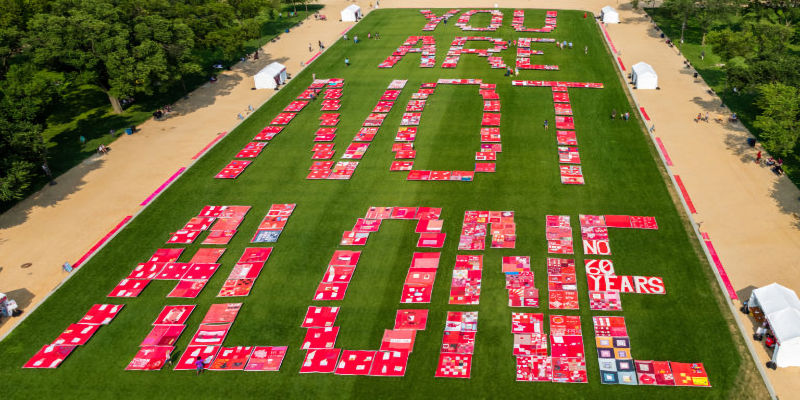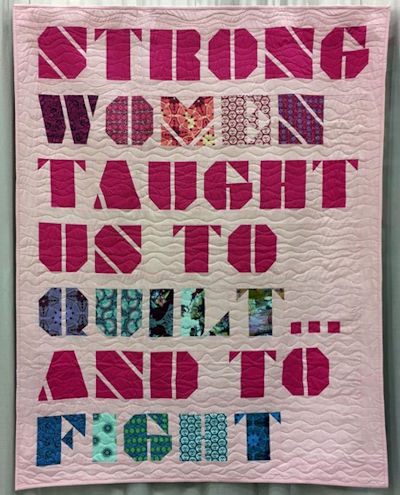
Internship: Memorialising gender-based violence
The Monument Quilt was an activist memorialisation project focused on gender-based violence, which ran between 2013 and 2019 in the USA and Mexico.
Inspired by the rich histories of activist quilting in the US and beyond - most notably the NAMES Project AIDS Memorial Quilt and the Underground Railroad Quilts - the project collected 3,000 individual squares, made by survivors of GBV and their allies, which share narratives of victimisation, survival, and mutual support. While the active phase of the Monument Quilt project, in which the squares were created, ended in 2019, some of its pieces can still be viewed in the various archives in which they are stored and, on occasion, on display in museums and art galleries. In addition, you can view all of the pieces of the Quilt are available to view via its digital archive.
This student research internship, led by Dr Harriet Gray, generated a qualitative content analysis of a sample of the digitally archived Quilt squares. The intern, Debbie Faudoa Rodriguez, coded the squares, identifying their themes as well as taking note of their text and design features, and built this into a database. This enabled Debbie to make informed statements about, for example, which themes and ideas are most dominant across the Quilt as a whole. Harriet Gray provided some initial themes to code for, but others arose during the coding process.
Debbie Faudoa Rodriguez presented her important findings at the Peace Lab launch to an audience of academics, students, practitioners and the general public.

Debbie says:
Contact us
Professor Nina Caspersen
Co-Director
nina.caspersen
+44 (0)1904 323 555
LinkedIn
Professor Graeme Davies
Co-Director
graeme.davies
+44 (0)1904 323 546
@https://twitter.com/a_graeme
Additionally, PhD student Phoebe Martin and Dr Harriet Gray have worked together on a article that will be published in ajournal shortly. The article is called "You are Not Alone: Feminist memorialisation and the present tense of gender-based violence in the Monument Quilt".
The article examines how in recent years a new tide of memorials dedicated to victim-survivors of gender-based violence has started to rise across the world. In this article, we analyse a significant example of this memorialisation movement: the Monument Quilt, a large-scale, collaborative, textile-based craftivist project based in Baltimore and Mexico City. Unlike permanent installations, like statues or parks, the Monument Quilt is a deliberately temporary project with multiple creators. We argue that because of its form, the Monument Quilt opens space for community building, narrative complexity, and an approach to temporality that foregrounds the chronicity of gender-based violence.
Contact us
Professor Nina Caspersen
Co-Director
nina.caspersen
+44 (0)1904 323 555
LinkedIn
Professor Graeme Davies
Co-Director
graeme.davies
+44 (0)1904 323 546
@https://twitter.com/a_graeme